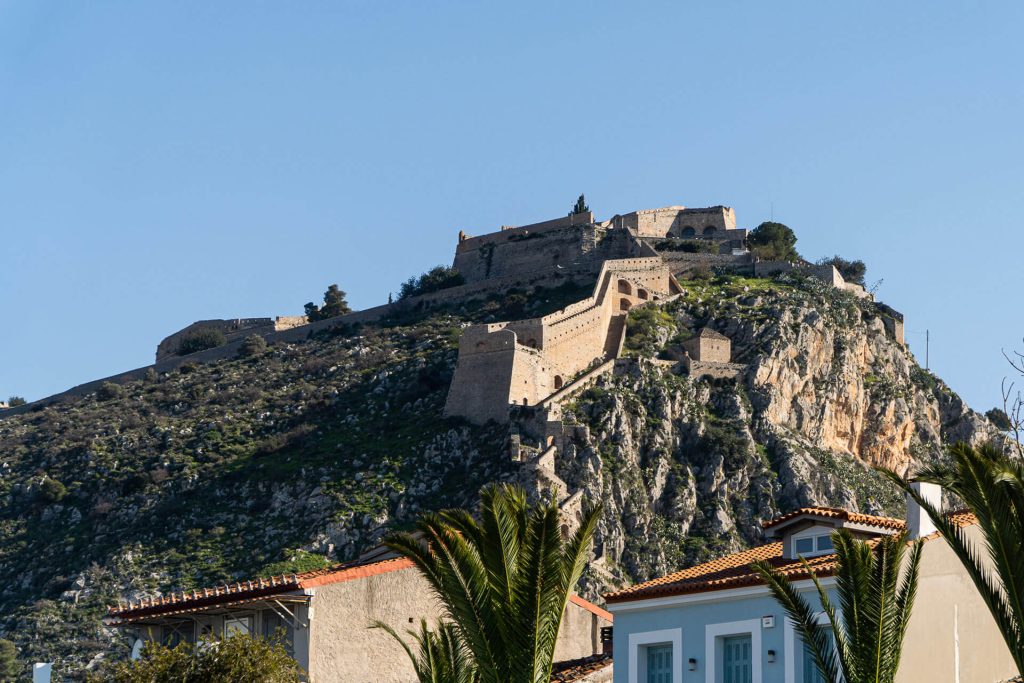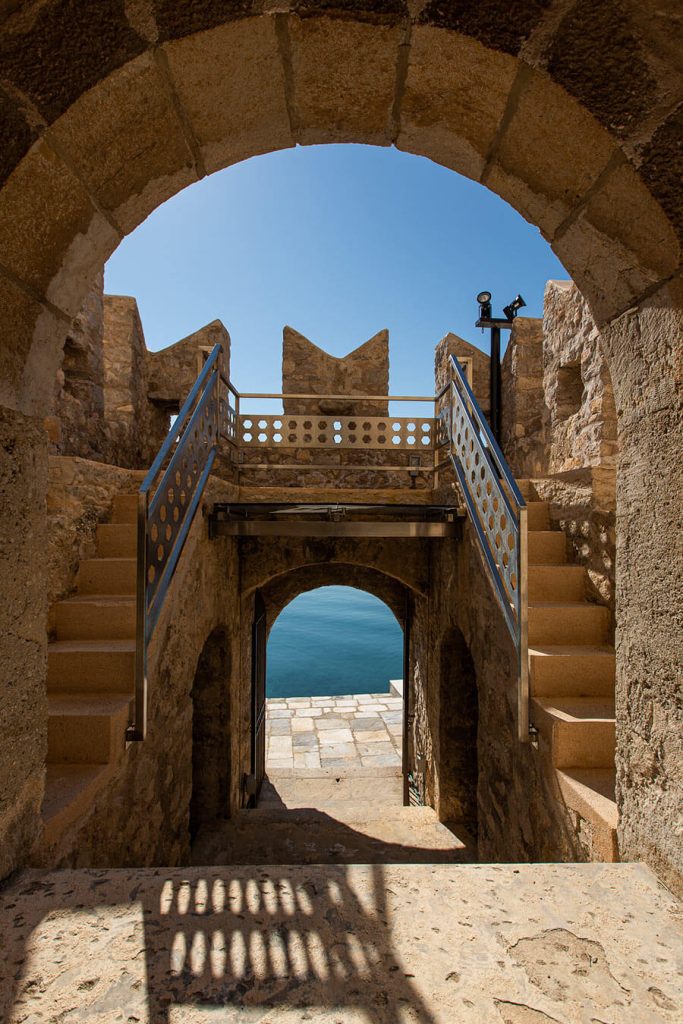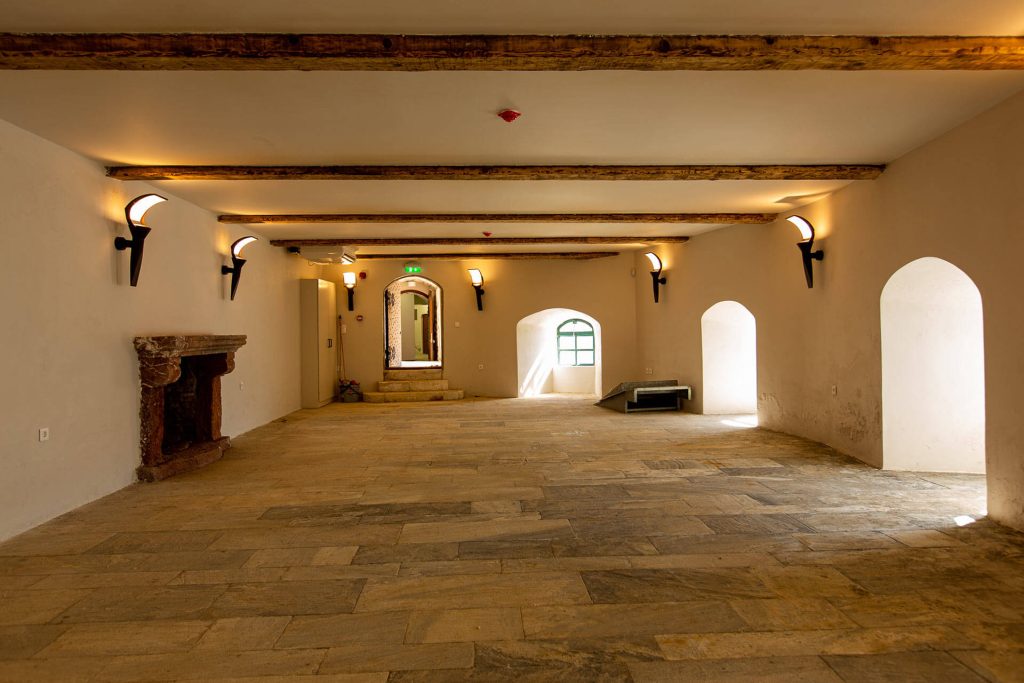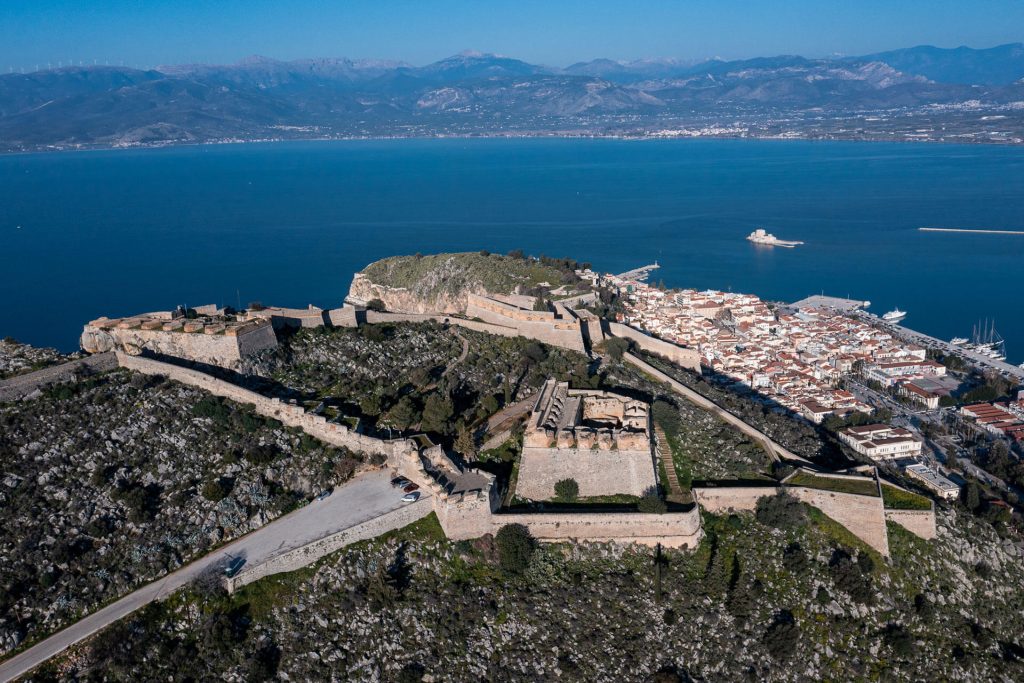History
The Bourtzi fortress is a monument of the highest rank, and indeed one of the most important fortifications in the whole of Greek lands. It was built during the first period of the Venetian rule, when Vittore Pasqualigo was the commander of Nauplion (Provedittore), from whom originally it took its name, i.e. “Castel Pasqualigo”. During the Venetian occupation it was also known as the “Fortress of the Rock” or “of the Sea” (“Castello dello scoglio” or “Castello a mare”). Much later, during the Greek War of Independence, the names “Thalassopyrgos” or “Castelli” were used.



The name “Bourtzi” (Tower or Fortress), by which it is known to this day, was established during the Ottoman occupation. The purpose of its construction was to protect the entrance to the city’s port. The main objective of the fort was to block the entrance to the port, in cooperation with the land bastion of the “Five Brothers”, since only from this passage is it possible for large ships to pass. On the north side the shallow water prevents navigation.
The construction work was entrusted to the architect Antonio Gambello and started in June 1471. In spring of the following year, Gambello returned to Venice and the work was surveyed by Niccolò Brancaleone, who was sent out as a specialist in fortifications. Later in 1477 Gambello returned from Venice to continue monitoring the works.
The fortress served to defend the city for 350 years, during which it received several repairs and modifications. During the Greek War of Independence it played an important role in the liberation of Nauplion, but suffered serious damage mainly on its southern side, that faces the city. After 1833, it was used as a place of residence for the executioner, who effected the sentences of capital punishment and left the island only for the guillotine executions that took place in the fortress of Palamidi. When beheading was banned as a method of execution, the fortress was abandoned.



With the creation of the Hellenic Tourism Organization (EOT) in early 1930s, the Bourtzi fort was leased out for touristic purposes.It was turned into a Class A tourist centre, operating as a 14-room hotel and restaurant. As a hotel, in the 1940s and 1950s, it hosted international celebrities. After functioning without interruption for some 37 years into the late 1960s, it was closed, as it no longer met modern standards of accommodation.
Finally, after a few minor alterations by the EOT in the mid-1980s, it worked as a restaurant and refreshment venue, until approximately 1997. After the recent round of maintenance, restoration and enhancement works, completed by the Hellenic Ministry of Culture in 2021, the fort is accessible to visitors, with exhibition and recreation areas.
Architecture
The fort has an irregular and elongated plan with its main axis oriented in the E-W direction. Bastions round in plan are formed at its two ends. Towers are placed on the long sides, two of which protect the gates of each side. These towers are further secured from the outside by semicircular bulwarks, the so-called “barbacane”. Only the south “barbacane” has two additional protective polygonal bulwarks on either side of the gate. The massive central tower, flanked by a large courtyard to the east and a small one to the west, dominated the entire island.



A long iron chain ran from the south edge of the fortress up to the artificial mole built in the area of the coastal bastion named “The Five Brothers” in the corner of the lower city of Nauplion. When the chain was pulled tight, it rose almost to the surface of the water, and no ship could approach the harbour and the city. But when it was relaxed, it rested on the seabed and ships passed freely. So Nauplion, in addition to being called “Napoli di Romania”, acquired also the name “Porto Catena”– the “Port of the Chain”.
Around the Hagios Theodoros Island, the Venetians assembled an underwater fortification (a “porporella”). This consisted of boulders placed in a circular arrangement. Even today they prevent vessels with a deep draft from getting close to the fortress. This additional work strengthened the defence and was executed most cleverly: in the period between 1480 and 1515 a Venetian decree was issued by which every ship, regardless of its type, every time it sailed into the port of Nauplion had to bring a load of stones which, by means of a small boat had to be deposited at the breakwater (“porporella”),wherever the harbourmaster (armiraglio) indicated.
Konstantinos Boudouris
Architect
Ephorate of Antiquities of Argolis


